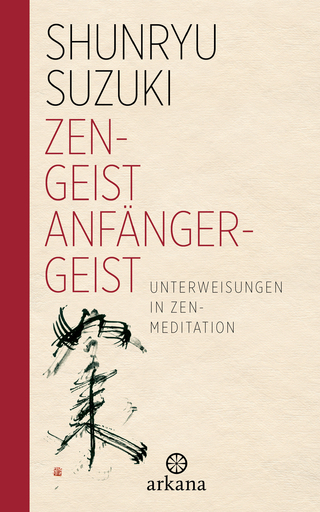
Bridge of Quiescence
Experiencing Tibetan Buddhist Meditation
Seiten
1998
Open Court Publishing Co ,U.S. (Verlag)
978-0-8126-9361-4 (ISBN)
Open Court Publishing Co ,U.S. (Verlag)
978-0-8126-9361-4 (ISBN)
- Titel z.Zt. nicht lieferbar
- Versandkostenfrei innerhalb Deutschlands
- Auch auf Rechnung
- Verfügbarkeit in der Filiale vor Ort prüfen
- Artikel merken
For centuries Tibetan Buddhist contemplatives have directly explored consciousness through meditation. This text brings together their findings and the findings of Western scientists and philosophers on the nature of consciousness.
Consciousness is a riddle for Western science and philosophy, yet for centuries Tibetan Buddhist contemplatives have directly explored consciousness through carefully honed, rigorous techniques of meditation. This book brings together the findings of these Tibetan practitioners and the findings of Western scientists and philosophers on the nature of consiousness. The foundation of the Tibetan Buddhist science of consciousness was laid by Tsongkhapa (1357-1419), acclaimed by some as the Martin Luther, and by others as the Thomas Aquinas, of Tibetan Buddhism. "The Bridge of Quiescence" gives a readable account of Tsongkhapa's thought, and includes an original translation (with detailed commentary) of Tsongkhapa's presentation of techniques for developing exceptionally high degrees of attentional stability and clarity. According to Tsongkhapa, enchancement and refining of one's attention is an indispensable prerequisite to fruitful introspective inquiry into the nature of the mind and of consciousness itself. The insights gleaned from such contemplative investigations can be used to identify and eliminate the inner sources of anxiety, frustration and discontent.
To make the implications of Tsongkhapa's thinking clear, B. Alan Wallace provides an outline of Tsongkhapa's outlook and assumptions. Western science, influenced by what Wallace calls "the cult of objectivity", neglected consciousness for 300 years, and then turned to the study of consciousness employing methods devised for investigating the external world of physical objects. Introspection has often been dismissed as futile or unscientific yet, Wallace contends, trained introspection may yield important knowledge of consciousness. "The Bridge of Quiescence" provides valuable materials for the practice of meditation, and also affords a bridge from Eastern meditative practice to Western philosophy, science and religion. Wallace's discussion draws upon his knowledge of experimental psychology, such as the sensory deprivation studies, and relates Buddhist meditation to discussions of consciousness by such Western philosophers as William James, William Christian and John Searle.
Consciousness is a riddle for Western science and philosophy, yet for centuries Tibetan Buddhist contemplatives have directly explored consciousness through carefully honed, rigorous techniques of meditation. This book brings together the findings of these Tibetan practitioners and the findings of Western scientists and philosophers on the nature of consiousness. The foundation of the Tibetan Buddhist science of consciousness was laid by Tsongkhapa (1357-1419), acclaimed by some as the Martin Luther, and by others as the Thomas Aquinas, of Tibetan Buddhism. "The Bridge of Quiescence" gives a readable account of Tsongkhapa's thought, and includes an original translation (with detailed commentary) of Tsongkhapa's presentation of techniques for developing exceptionally high degrees of attentional stability and clarity. According to Tsongkhapa, enchancement and refining of one's attention is an indispensable prerequisite to fruitful introspective inquiry into the nature of the mind and of consciousness itself. The insights gleaned from such contemplative investigations can be used to identify and eliminate the inner sources of anxiety, frustration and discontent.
To make the implications of Tsongkhapa's thinking clear, B. Alan Wallace provides an outline of Tsongkhapa's outlook and assumptions. Western science, influenced by what Wallace calls "the cult of objectivity", neglected consciousness for 300 years, and then turned to the study of consciousness employing methods devised for investigating the external world of physical objects. Introspection has often been dismissed as futile or unscientific yet, Wallace contends, trained introspection may yield important knowledge of consciousness. "The Bridge of Quiescence" provides valuable materials for the practice of meditation, and also affords a bridge from Eastern meditative practice to Western philosophy, science and religion. Wallace's discussion draws upon his knowledge of experimental psychology, such as the sensory deprivation studies, and relates Buddhist meditation to discussions of consciousness by such Western philosophers as William James, William Christian and John Searle.
| Erscheint lt. Verlag | 24.12.1998 |
|---|---|
| Zusatzinfo | Illustrations |
| Verlagsort | Chicago, IL |
| Sprache | englisch |
| Maße | 152 x 228 mm |
| Gewicht | 703 g |
| Themenwelt | Geisteswissenschaften ► Philosophie |
| Geisteswissenschaften ► Religion / Theologie ► Buddhismus | |
| Medizin / Pharmazie ► Medizinische Fachgebiete ► Psychiatrie / Psychotherapie | |
| ISBN-10 | 0-8126-9361-2 / 0812693612 |
| ISBN-13 | 978-0-8126-9361-4 / 9780812693614 |
| Zustand | Neuware |
| Haben Sie eine Frage zum Produkt? |
Mehr entdecken
aus dem Bereich
aus dem Bereich
Philosophische Betrachtungen
Buch | Softcover (2024)
Aufbau TB (Verlag)
12,00 €
Unterweisungen in Zen-Meditation
Buch | Hardcover (2024)
Arkana (Verlag)
20,00 €


